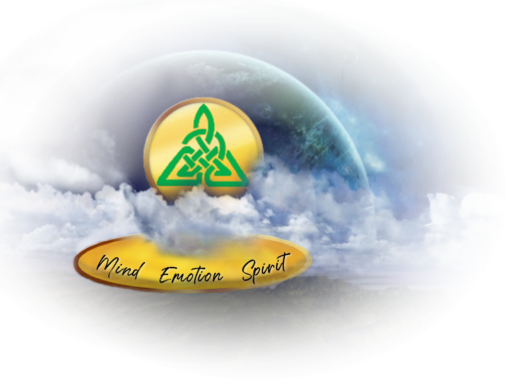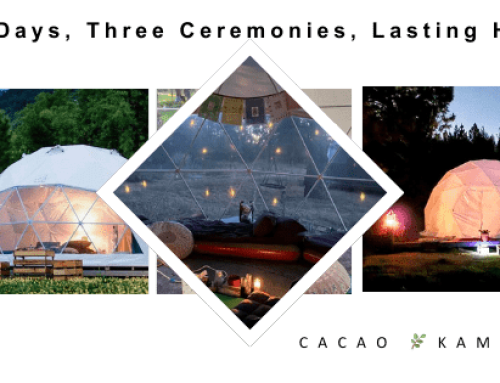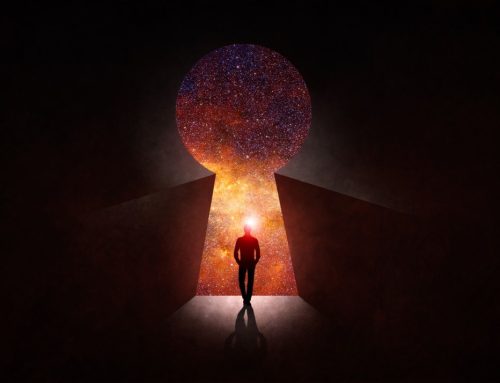
Magic Mushrooms and Psilocybin: Shamanic Healing and Spiritual Connection
Magic mushrooms, commonly known as psilocybin mushrooms, are fungi that contain the naturally occurring psychedelic compounds psilocybin and psilocin. These compounds have a long history of shamanic use and spiritual exploration, serving as powerful tools for personal growth, consciousness expansion, and connection to the divine.
Through the lens of modern science and ancient tradition, psilocybin is recognized as a visionary substance capable of opening the mind, enhancing sensory perception, and supporting profound spiritual and emotional healing.
Learn more about plant medicine ceremonies and their role in shamanic healing.
Psilocybin: Awakening the Mind and Expanding Consciousness
Psilocybin is more than just a psychedelic compound—it is a gateway to altered states of awareness, a tool that has been used for thousands of years to explore consciousness, heal emotional wounds, and connect with the divine. Found naturally in certain species of mushrooms, psilocybin interacts with the brain’s serotonin receptors, particularly the 5-HT2A receptor, creating profound changes in perception, cognition, and emotional processing.
When ingested in a sacred, guided setting, psilocybin has the unique ability to dissolve rigid patterns of thought and ego-driven narratives, allowing individuals to experience life from a new, expansive perspective. Participants often report feelings of interconnectedness, the dissolution of boundaries between self and other, and a direct encounter with the mysteries of existence. In shamanic traditions, this state is viewed not as hallucination but as accessing a higher reality—a doorway to truths that are normally hidden from everyday perception.
Historically, psilocybin mushrooms were used by indigenous cultures to foster spiritual awakening and personal insight. The Aztecs called them teonanácatl, meaning “flesh of the gods,” reflecting their belief that the mushrooms provided a direct channel to the divine. Shamans and healers across Central and South America used psilocybin to guide participants through rituals that promoted healing, self-understanding, and communion with spirits, ancestors, or deities. These ceremonies were carefully structured: the timing, preparation, and ritualistic practices all contributed to a safe and transformative experience.
From a modern perspective, psilocybin’s impact on consciousness is being scientifically documented. Researchers at institutions like Johns Hopkins University and Imperial College London have demonstrated that psilocybin can induce mystical-type experiences, characterized by a sense of unity with all life, transcendence of time and space, and encounters with perceived divine intelligence. These experiences are not only profoundly meaningful but are often accompanied by lasting increases in life satisfaction, emotional openness, and spiritual well-being.
At a neurological level, psilocybin temporarily disrupts the brain’s default mode network (DMN), the region responsible for self-referential thinking and habitual thought patterns. By quieting the DMN, psilocybin allows for unfiltered awareness, heightened creativity, and deep introspection. This neural flexibility explains why participants frequently describe moments of clarity, profound insight, or a renewed sense of purpose following guided psilocybin experiences. It is as if the mind is liberated from its usual constraints, opening the door to both personal and spiritual revelation.
The psychological effects of psilocybin are diverse and deeply personal. Many participants describe a heightened sensitivity to beauty and nature, a renewed sense of compassion, and the emergence of previously suppressed emotions or memories. The substance encourages participants to confront uncomfortable aspects of themselves in a supportive environment, allowing for emotional healing and integration. This process can lead to the release of guilt, shame, or fear, ultimately fostering a greater sense of freedom and self-acceptance.
Importantly, psilocybin also cultivates a sense of reverence and humility. In traditional ceremonies, the experience is framed as a meeting with something greater than oneself—a God, Goddess, or universal consciousness. This interaction encourages participants to recognize their interconnectedness with all life, inspiring behaviors rooted in empathy, care, and spiritual alignment. For many, the mushroom experience is not just about the mind—it is a holistic awakening that engages body, heart, and soul.
The expansion of consciousness facilitated by psilocybin also has profound implications for creativity, problem-solving, and insight. Writers, artists, and thinkers have historically used psilocybin or other entheogens to break free from conventional patterns, access novel ideas, and see the world in new ways. In a modern therapeutic context, this enhanced perspective is invaluable for individuals navigating mental health challenges, trauma, or existential questioning.
Ultimately, psilocybin is a bridge—linking the personal with the universal, the ordinary with the mystical, and the mind with the spirit. When approached with respect, intention, and guidance, it provides a safe container for exploration, transformation, and spiritual awakening. Through shamanic ceremonies, guided retreats, or controlled therapeutic sessions, psilocybin awakens the mind and expands consciousness, revealing both the hidden recesses of the self and the profound mysteries of existence.
Learn more about guided psilocybin experiences and spiritual retreats.
Explore Johns Hopkins psilocybin research on mystical experiences.

plant medicine
The History of Psilocybin Ceremonies
Psilocybin mushrooms have been used in spiritual and healing rituals for thousands of years:
Ancient Algeria: Cave paintings from 5000 BC suggest early ritualistic use of psilocybin-containing mushrooms.
Central America: Pre-Columbian cultures, especially the Aztecs, used psilocybin for healing, divination, and communion with spirits. The Aztecs called them teonanácatl, meaning “flesh of the gods.”
Colonial Suppression: Catholic missionaries banned psilocybin, fearing its potential for spiritual communication, but the practice persisted in remote areas.
Modern Discovery: Gordon Wasson, the ethnomycologist, participated in a psilocybin ceremony with Mazatec shamans, later documenting his experiences in Life Magazine, which sparked global interest and influenced the countercultural movement of the 1960s and 70s.
Read more about psilocybin and spiritual well-being.
The Shamanic Ceremony: Structure and Purpose
Psilocybin ceremonies serve as sacred containers for spiritual growth:
Preparation: Participants set intentions and create a safe, supportive environment.
Consumption and Journey: Mushrooms are consumed, often with rituals such as drumming, chanting, smudging, or guided meditation. Participants may experience visions, emotional release, or profound insights.
Integration: Post-ceremony reflection ensures the experience translates into personal growth and spiritual understanding.
Shamanic healing ceremonies help participants face uncomfortable emotions, release limiting beliefs, and connect directly with the God/Goddess archetype, higher consciousness, and their own authentic nature.
Discover plant medicine for personal transformation.
Mental and Physical Effects of Psilocybin
Psilocybin’s effects are multifaceted, affecting the mind, body, and spirit:
Sensory Enhancement: Heightened tactile, visual, and auditory perception.
Emotional Clarity: Euphoric sensations and profound introspection.
Physical Effects: Pupil dilation, increased heart rate, nausea, and occasional headaches.
Duration: Experiences typically last 4–7 hours; higher doses (“heroic doses”) may extend longer.
Mystical Encounters: Users often report hearing guiding voices, seeing spiritual entities, or experiencing ego dissolution.
Some ethnobotanists suggest psilocybin may even serve as a portal for interdimensional or cosmic communication, aligning with the visions of elves, fairies, or ancestral spirits reported in ceremonies.
External Link: Johns Hopkins Psilocybin Research
Psilocybin in Modern Medicine
Contemporary research supports psilocybin’s therapeutic potential:
Spiritual Significance: Over 50% of study participants report their psilocybin experience as the most spiritually meaningful of their lives (Griffiths et al., 2008).
Mental Health: Psilocybin shows promise in alleviating depression, anxiety, PTSD, and OCD.
End-of-Life Anxiety: UCLA studies demonstrate reductions in fear and existential distress among terminally ill patients.
Addiction Therapy: Controlled psilocybin use supports recovery from alcohol and tobacco addiction.
Psilocybin enhances openness, empathy, and psychological flexibility, making it a powerful adjunct to both spiritual practice and shamanic healing rituals.
Internal Link: Learn about psilocybin-assisted therapy.
Preparing for a Psilocybin Ceremony
Choose Safe, Trusted Guides: Work with experienced shamans or licensed facilitators.
Set Intentions: Clarify spiritual or personal goals.
Create a Sacred Space: Use ritual elements like smudging, drumming, and meditation.
Integration Practices: Journaling, therapy, or group discussion help translate insights into daily life.
By preparing thoughtfully, participants maximize both spiritual insight and emotional healing.
Internal Link: Explore shamanic plant medicine for transformation.
Conclusion: The Transformative Power of Magic Mushrooms
Psilocybin mushrooms are more than a psychedelic substance—they are sacred tools for spiritual exploration, shamanic healing, and personal transformation. By combining ancient ritual, mindful intention, and modern research, psilocybin offers profound insights into consciousness, emotional release, and spiritual connection.
Whether used in guided ceremonies, shamanic retreats, or clinical research, magic mushrooms continue to reveal their timeless role in connecting humans to the divine, unlocking deeper understanding of life, the self, and the universe.
Discover Shamanic Psilocybin Ceremonies with Meehl Foundation – Begin your journey of transformation and spiritual awakening today.

Shamanic Healing





Leave A Comment